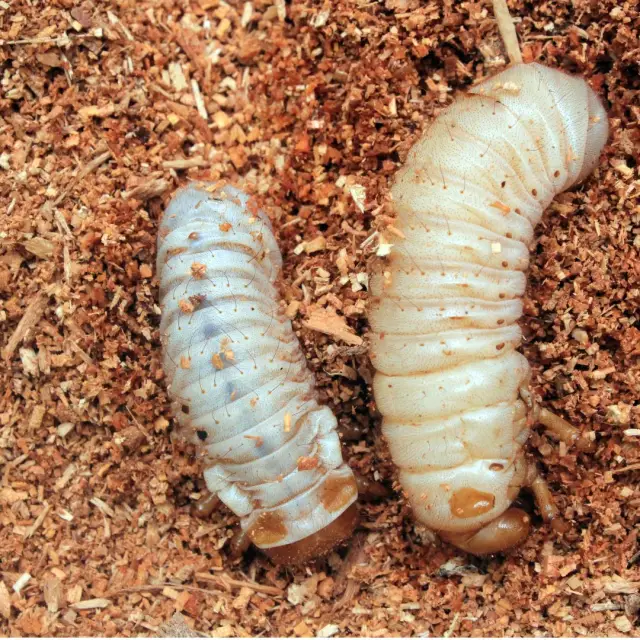Mojojoy is a worm that lives in palm trunks in the Amazon region, especially in Colombia. Although to some it may seem like a strange food option, for indigenous and local communities, mojojoy is an important source of nutrients and an ancient gastronomic tradition.
History and Origin of Mojojoy
The Amazon: A Rich and Diverse Ecosystem
The Amazon is one of the most biodiverse regions on the planet, home to a large number of plant and animal species. Within this ecosystem, palms play a crucial role, not only as a source of food and materials, but also as habitat for various species, including the mojojoy.
El Mojojoy: An Ancestral Tradition
The consumption of mojojoy has deep roots in the indigenous cultures of the Amazon. Indigenous peoples, such as the Tikuna, Huitoto, and Bora, have collected and consumed these worms for centuries. For them, mojojoy is not only a source of food, but also a symbol of connection with nature and an essential component of their diet and traditional medicine.
Myths and legends
In indigenous mythology, mojojoy is often linked to stories of creation and renewal. Worms are said to have the power to regenerate and strengthen those who consume them, a belief that reinforces their status as a valuable and respected food.
Nutritional Value of Mojojoy
A Rich Source of Protein
Mojojoy is known for its high protein content, making it an important source of nutrients for the communities that consume it. In addition to protein, mojojoy contains healthy fats, vitamins and minerals essential for the human body.
Health benefits
High Quality Proteins: The proteins in mojojoy are of high biological value, which means that they contain all the essential amino acids that the body needs.
Healthy Fats: The fat content of mojojoy includes unsaturated fatty acids that are beneficial for cardiovascular health.
Vitamins and Minerals: Mojojoy is a good source of vitamins such as vitamin B12 and minerals such as iron and zinc, which are crucial for the functioning of the body.
Comparison with Other Food Sources
Compared to other protein sources such as beef or chicken, mojojoy is a more sustainable option and less harmful to the environment. Its production does not require large areas of land or the use of agrochemicals, which reduces its ecological footprint.
Collection and Preparation of Mojojoy
Collection Methods
Harvesting mojojoy is a task that requires skill and knowledge of the environment. The collectors look for decaying palms, where the worms find an ideal habitat. Once located, they are carefully extracted from the trunks to avoid damaging them.
Traditional Preparation
Raw: In some cultures, mojojoy is consumed raw, making the most of its nutrients and creamy texture.
Roasted: Another popular way to consume mojojoy is roasted. The worms are skewered on sticks and roasted over a fire, giving them a smoky flavor and crunchy texture.
In Stews: Mojojoy can also be included in stews and soups, where its flavor is combined with other local ingredients such as cassava, plantain and Amazonian herbs.
Culinary Innovations
Recently, mojojoy has found its way into haute cuisine, with innovative chefs experimenting with new ways of preparing and presenting this ingredient. From sauces and pâtés to gourmet dishes, mojojoy is gaining recognition beyond the borders of the Amazon.
Cultural Impact of Mojojoy
Meaning in Indigenous Culture
For indigenous communities, mojojoy is not only food, but also a significant cultural element. It represents the connection with the earth and respect for nature. Furthermore, its collection and consumption are integrated into rituals and celebrations that reinforce community identity and cohesion.
Mojojoy also has a place in traditional medicine. It is believed that its nutritional properties can help strengthen the immune system and provide energy. Some indigenous remedies include mojojoy as an ingredient to treat various ailments.
The sale of mojojoy is a source of income for many families in the Amazon. As interest in exotic and sustainable foods grows, mojojoy is finding new markets, both nationally and internationally.
Challenges and Opportunities
Conservation and Sustainability
Sustainable harvesting of mojojoy is crucial to ensuring that this ancient practice can continue without harming the ecosystem. Education and implementation of responsible harvesting methods are essential to preserving both biodiversity and cultural traditions.
Integration in the Global Market
As interest in sustainable foods grows, mojojoy has the potential to become a featured product in the global market. However, this requires overcoming challenges such as logistics, health certification and cultural acceptance in markets outside the Amazon.
Education and Promotion
Promoting knowledge and acceptance of mojojoy through education is essential. Programs that teach about the history, benefits, and ways of preparing mojojoy can help increase its popularity and acceptance in different regions and cultures.
The mojojoy is much more than a simple worm. It is a nutritional treasure, a cultural pillar and an economic opportunity for the communities of the Amazon. Its history and impact go beyond what can be seen with the naked eye, revealing a deep connection between humans and nature. As the world seeks sustainable and nutritious food solutions, mojojoy emerges as a symbol of the richness and diversity of the Amazon, ready to be rediscovered and valued by new generations.
